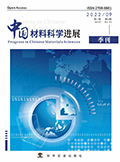参考文献
[1] Tahira P, Muhammad S, Nadia S, et al. Prospects in anode materials for sodium ion batteries-A review[J]. Renewable and Sustainable Energy Reviews, 2020, 119: 109549.

